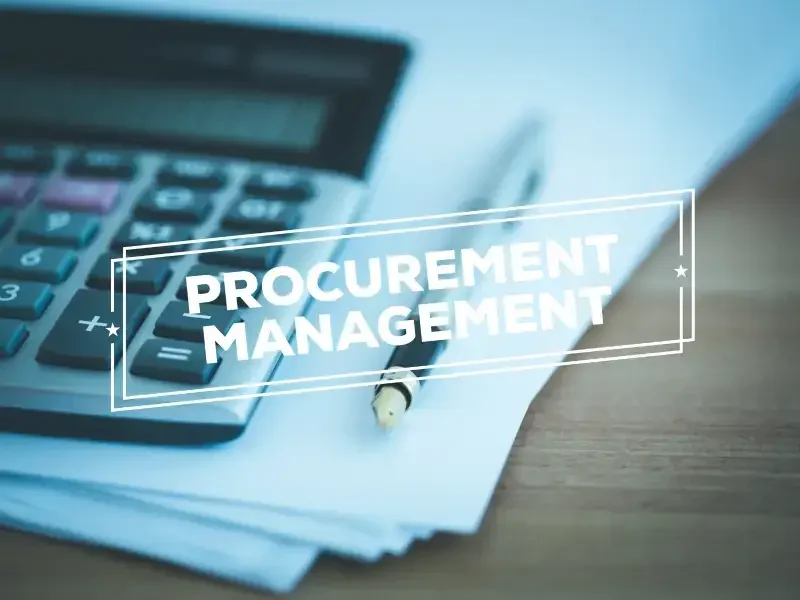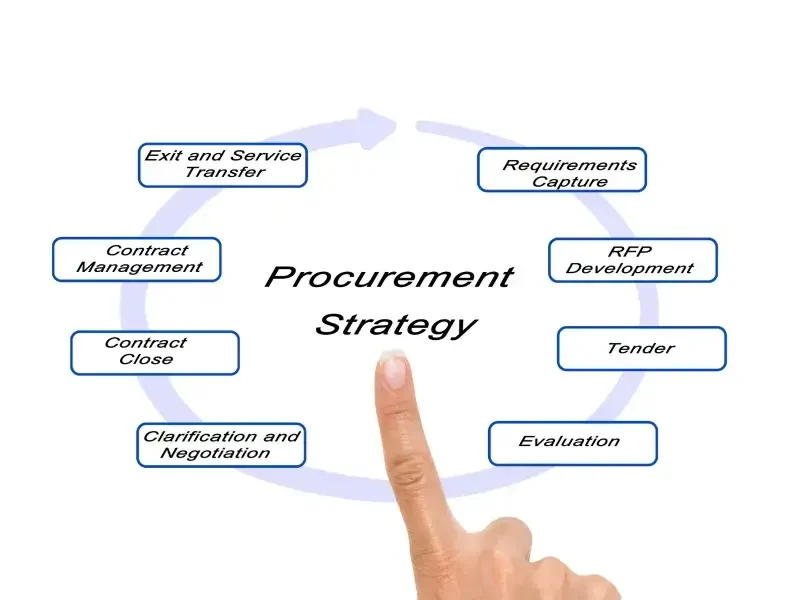case studies
SAP ARIBA Implementation in UAE Public Sector: Case Study
Noel DCosta
- Last Update :
In recent years, the topic of SAP ARIBA implementation in the United Arab Emirates has become closely linked with the wider effort to modernize public procurement.
The steady expansion of national projects has turned purchasing and supplier relations into a matter of strategic importance, and this is no minor adjustment. Officials have been asked to move away from stacks of paper files and rigid approvals toward structured e-procurement that secures transparency and efficiency.
The change has not been without hesitation. Some ministries had systems that functioned reasonably well on their own, yet when placed in the larger context of cross-ministry collaboration they proved limited.
The pressure to modernize was not only about cost but also about the reputation of the state. A single error in supplier payments or delays in tendering could affect public trust.
Readers who want to see how public rules tie directly into such projects may consult related notes on SAP implementation for public sector compliance.
Concerns that shaped the early debates included
How to ensure supplier registration across thousands of vendors scattered across the Emirates.
Whether data should remain inside national borders to meet residency requirements.
How to align procurement rules with UAE Vision 2031 and the wider digital government plan.
I have spoken with project staff who admit that the first reaction was cautious. Everyone had questions about whether a cloud-based platform could meet local security policies. Yet, over time, as results appeared in the form of shorter tender cycles and improved audit trails, the early doubts gave way to a slow confidence.
This is the setting in which SAP ARIBA entered the UAE public sector. It was not introduced as a fashionable trend but as a tool shaped by necessity and by lessons drawn from earlier attempts at reform.

The SAP Ariba implementation in the UAE public sector demonstrated that procurement modernization is as much about aligning people, policies, and suppliers as it is about configuring technology.
Background & Context for the SAP ARIBA Implementation for Procurement

Procurement in the United Arab Emirates (UAE) has always been shaped by national ambition and by the realities of growth. Public projects expand quickly, yet oversight must remain consistent.
In my own work across Europe, the Middle East, and Africa for more than twenty-four years, I have noticed that governments everywhere face the same recurring problem. They often depend on well-intentioned but outdated systems that do not scale once the demands of modern administration begin to rise.
In the UAE, ministries relied on a mix of home grown systems and small digital tools. These methods worked to a point, but they left gaps in transparency and slowed supplier collaboration. When public expectations increased, the weaknesses of fragmented systems became impossible to ignore.
National strategies such as UAE Vision 2031 added further urgency. A paperless government was set as policy, and the goal was to achieve it in the next 5 years. International partners also pressed for stronger practices in e-tendering and for greater predictability in contract execution.
These demands forced a reconsideration of technology platforms and raised questions of data residency, supplier onboarding, and how procurement law should be reflected in digital workflows. I have seen similar tensions in other large projects, and they often return to questions of compliance, as explored in the discussion on SAP implementation for public sector compliance.
Why SAP ARIBA was selected
From my experience, the choice of system usually narrows to a few central issues:
Whether the solution can support strategic sourcing across multiple agencies.
How well it can handle supplier registration on a large scale.
The ability to integrate with existing ERP environments without excessive disruption.
Confidence that procurement records remain auditable and compliant.
The UAE case followed this same reasoning. Officials looked for a platform that delivered visible improvements while still preparing a base for future growth.
For many of them, it was also about making sure the project stayed within scope, something I have seen fail in other regions and which is well captured in the lessons on avoiding scope creep in SAP implementation.
What helped in this case was a structured approach to system planning, a theme echoed in guides on system implementation in SAP, which stress the importance of governance and step-by-step delivery.
Case Study Client Profile: UAE Government Ministry
| Category | Details |
|---|---|
| Client | Federal government ministry in the United Arab Emirates |
| Sector | Public procurement and national infrastructure projects |
| Scale | Manages multi-billion dirham procurement spend annually across multiple suppliers and contractors |
| Initial Challenges | Reliance on paper-based tendering, slow approval chains, inconsistent compliance reporting, and supplier onboarding delays among SMEs |
| Implementation Focus | Integration of SAP Ariba with SAP S/4HANA and legacy systems, supplier training programs, data residency compliance, and change management |
| Outcomes | 30–40% reduction in tender cycle times, improved transparency through audit-ready workflows, higher supplier participation including SMEs, and stronger alignment with UAE digital government strategy |
The Functional Implementation of SAP ARIBA for Procurement and Sourcing

Our SAP ARIBA implementation in the UAE public sector was, by no means, a small project. It required reshaping how sourcing, supplier management, contract oversight, and spend analysis were carried out.
Each function revealed its own strengths and its own challenges. In my experience across other regions, no two implementations follow the same path, and this was no exception.
1. Sourcing and Tendering
The first priority was to bring order to sourcing. Requests for Proposal had long been handled through paper files and local spreadsheets, which worked only until volumes grew too high. With SAP ARIBA, ministries could prepare tenders, distribute them widely, and evaluate responses within a single framework.
RFPs became easier to publish and track.
Evaluation produced auditable trails, which improved accountability.
Disputes over missing or late bids declined.
Some officers found the templates too rigid, yet others valued the consistency.
I remember one official remarking that even if the templates felt strict, at least everyone now followed the same set of rules. Notes on governance in large-scale projects, such as those outlined in system implementation practices, reflect similar tensions between order and flexibility.
2. Supplier Management
Onboarding suppliers was perhaps the most demanding activity. Thousands of vendors needed to be registered and qualified. Larger firms completed the process quickly, but many small and medium enterprises required more direct support.
Mass registration consumed more time than expected.
Training sessions had to be repeated for SMEs with limited digital literacy.
Qualification rules were tested often, as suppliers questioned rejections.
Performance reviews unsettled some vendors, particularly those unused to open evaluation.
During one workshop, a supplier admitted they had never before submitted a government bid electronically. It slowed progress, but it also showed the importance of patient instruction. Broader guidance on stakeholder alignment is reflected in SAP stakeholder management strategy, which echoes these same challenges.
3. Contract Management
Digital contract management, by contrast, moved forward with fewer barriers. The transition created a single reliable repository that auditors could consult without fear of missing records.
Contracts were stored centrally, reducing duplicate files.
Compliance rules were built into the approval steps.
Paper copies continued for a time but declined as confidence in the system grew.
Disputes over renewals and expirations dropped.
In many ways it reminded me of the quality gate practices used in other projects, such as those described in SAP quality gates, where each checkpoint helps reduce the risk of oversight.
4. Spend Analysis
Spend visibility was another reason the platform gained support. Ministries could view spending patterns, compare them to budgets, and prepare compliance reports with greater assurance.
Dashboards offered a clear picture of spending across agencies.
Compliance reviews had structured data to support conclusions.
Leadership used reports for planning and allocation.
The accuracy, however, depended heavily on data cleansing, which required repeated effort.
Challenges Observed
Supplier onboarding was far more complex than planners expected.
Training had to be broadened beyond initial budgets.
Data inconsistencies weakened early confidence in spend analysis.
The functional SAP ARIBA implementation in the UAE public sector showed that sourcing, supplier onboarding, contract oversight, and spend visibility could be managed within a single platform.
It also showed, perhaps more clearly than expected, that success depended less on the technology itself than on the steady effort invested in people, training, and data quality.
Functional Implementation of SAP Ariba in UAE Public Sector
| Function | Strengths Observed | Challenges Faced |
|---|---|---|
| Sourcing & Tendering |
|
|
| Supplier Management |
|
|
| Contract Management |
|
|
| Spend Analysis |
|
|
Technical Aspects for the SAP ARIBA Implementation for Procurement

The technical side of the SAP ARIBA implementation in the UAE public sector was not clean or quick. It took patience, long workshops, and compromises that many had not planned for.
The work was less about software installation and more about making sure different systems could speak to each other, cleaning years of untidy data, and staying inside rules that were strict and unforgiving.
1. Integration with ERP
Some ministries already worked with SAP S/4HANA. Others were on Microsoft Dynamics and Oracle e-Business Suite. SAP ARIBA had to sit in between both worlds. The S/4HANA links behaved once tested. Legacy integration caused headaches. Old scripts, missing documentation, and data recorded in inconsistent ways slowed things down.
Purchase orders and invoices had to flow both ways without error.
Middleware became the bridge to hold formats together.
Mapping data fields turned into long debates across ministries.
I remember one workshop where the question was simple: should the system be changed, or should the people adapt to the system? Neither answer felt comfortable. Related reflections on such trade-offs appear in system implementation approaches, where governance is stressed over shortcuts.
2. Data Migration
Data migration was never quick. Supplier lists carried duplicates. Contracts held missing information. Some files were outdated but still active.
Cleansing ran in repeated cycles.
Validation became routine, sometimes daily.
Master data governance had to be created from scratch.
A project lead once compared it to unpacking a warehouse of boxes where labels were half-missing. That picture stayed with the team. The same lessons are echoed in SAP quality gates, which explain why staged checks are critical in projects of this size.
3. System Architecture
The broader design required SAP ARIBA to connect not only with ERP but also with government services like the TAMM payment gateway.
APIs were built to move invoices and confirmations.
Middleware cut down the risk of duplicate transactions.
Interoperability tests were repeated before every release.
Local IT demanded visibility into every external link.
It was not efficient, but it reduced later risk.
4. Cloud Hosting and Data Residency
Data residency shaped hosting decisions from the start. UAE law requires government data to remain inside the country.
Data centres in Abu Dhabi and Dubai were used.
Security checks were run against national standards.
Residency clauses were written into contracts.
Some still pushed for on-premise, out of habit more than logic.
The debates were familiar. They reminded me of concerns in other public sector projects. The UAE solution followed the same path discussed in SAP implementation for public sector compliance, where residency and auditability often dominate the conversation.
Technical work rarely makes headlines. Yet without it, the programme would have failed. Integration, migration, architecture, and residency each brought delays, but the caution kept the system steady once it was in place.
Technical Aspects of SAP Ariba Implementation in UAE Public Sector
| Area | Strengths Observed | Challenges Faced |
|---|---|---|
| Integration with ERP |
|
|
| Data Migration |
|
|
| System Architecture |
|
|
| Cloud Hosting & Data Residency |
|
|

See How I Make Your ERP and AI System Selection or Implementation right for you.
ERP & AI System Selection – Identify and choose the right ERP or AI-enabled platform to fit your business needs.
Project Support & Recovery – Keep your project on track or bring failing implementations back under control.
ERP Modernization – Transform existing ERP systems to modern, efficient, and scalable ERP environments.
GET IN TOUCHRelated Articles: ERP Selection and Integration Challenges
Choose the Right ERP for Small Business Operations in 2025
An examination of how small enterprises can select ERP systems suited for cost, scale, and growth in 2025.
ERP System Selection for a Mid-Sized Manufacturer in Asia
A real-world example of ERP evaluation, focusing on manufacturing priorities in an Asian context.
Oracle ERP vs SAP
A side-by-side breakdown of two major ERP platforms with practical considerations for decision-makers.
SAP Integration Suite Delivery Delays
Insights into recurring bottlenecks in SAP Integration Suite rollouts and lessons for project managers.
Change Management & Adoption for the SAP ARIBA Implementation

Adoption of SAP ARIBA in the UAE public sector was less about system readiness and more about changing habits that had been in place for decades.
Officers valued paper, suppliers trusted face-to-face dealings, and ministries worried about how laws would hold up in a digital environment. Progress was steady, but not smooth.
1. Stakeholder Engagement was so Important
Different stakeholders saw different risks. Ministries wanted proof that procurement law was not compromised. Procurement officers worried about losing the space for judgment that paper allowed. Suppliers felt that electronic tendering could leave them out of the process.
I still remember a supplier asking if a single wrong click might cost him an entire tender. It was a fair concern. It reminded us that early dialogue mattered as much as the technical rollout.
The need for careful planning is consistent with lessons from how to avoid scope creep in SAP projects, where scope control is tied closely to stakeholder trust.
2. Training and Building Capacity needs to start Early
Training was the hinge between skepticism and use. Manuals existed, but people needed to try the system themselves, fail a little, and then try again.
End users learned best through case-based exercises.
SMEs required repeated workshops.
Officers asked for refreshers months after go-live.
One officer said she only began to feel confident after being allowed to enter test data and deliberately make mistakes. That type of insight shaped the design of later workshops.
The importance of capacity building is also underscored in change management planning, which points out that training is a continuous investment, not a one-off task.
3. Policy Alignment can slow down things
Policy alignment slowed work but safeguarded credibility. UAE procurement law had to be reflected step by step in SAP ARIBA’s workflows.
Approval chains were reviewed against existing rules.
Ministries compared notes to reduce inconsistencies.
Reviews delayed milestones but ensured legal compliance.
Such deliberate alignment resembles the structured checks described in SAP implementation public sector compliance, where compliance forms the backbone of system design.
4. Resistance in Practice will always be there
Even after training and testing, resistance lingered. Officers kept paper copies. Suppliers said the older process worked fine. Some ministries even allowed paper and electronic submissions to run in parallel at first.
Suppliers delayed switching to electronic tendering.
Training fatigue showed when sessions were too long.
Multi-ministry coordination slowed decisions.
Resistance never disappeared, but it lessened over time. Confidence grew with steady use, clearer policies, and visible results.
Difficulties That Stood Out
Supplier hesitation with electronic tendering.
Training budgets that did not cover the demand.
Alignment across ministries that slowed adoption.
Change management here showed that adoption is rarely sudden. It is gradual, often uneven, but with persistence the system moved from strange to ordinary, and from questioned to accepted.
Adoption & Change Management in SAP Ariba – UAE Public Sector
| Area | Progress Made | Challenges Faced |
|---|---|---|
| Stakeholder Engagement |
|
|
| Training & Capacity Building |
|
|
| Policy Alignment |
|
|
| Resistance to Change |
|
|
Key Challenges in an SAP ARIBA Implementation

Key Challenges You will Face in an SAP ARIBA Implementation
In my humble opinion, every major system change in government will have its own set of problems. In the case of SAP ARIBA in the UAE public sector, the difficulties were not abstract.
They were very real, visible in workshops, supplier training sessions, and in the daily frustration of people who felt their old way of working had been taken away. Some challenges were technical, others were cultural, and a few were simply about patience.
1. Data Residency and Compliance
The requirement to keep sensitive procurement data within the UAE was clear from the start. But clarity did not make it simple. Hosting choices were limited, and every contract needed specific clauses to guarantee data residency.
Auditors kept returning with new questions. At one point, a ministry official remarked that the compliance process felt longer than the integration itself. The reality is that compliance is never finished, it is ongoing.
This experience matches wider lessons shared in SAP implementation and public sector compliance, where regulations remain the main driver of project timelines.
Local data centres were essential.
Audit reviews repeated several times.
Legal teams had to be consulted at almost every step.
2. Supplier Onboarding
Onboarding suppliers proved to be harder than configuring the system. The supplier base was broad. Some were multinational firms with their own ERP teams, while many others were small businesses run by just a few people.
Digital maturity was uneven. Some SMEs had never worked through an online tendering portal before.
Many suppliers delayed registration, waiting to see if the system was really mandatory.
Training sessions for SMEs had to be repeated multiple times.
Errors during electronic bidding or auctioning was very common in the first months.
One supplier confided that he felt more comfortable driving across the city to deliver a paper envelope than pressing “submit” online. That kind of hesitation cannot be solved with technology alone.
It needed reassurance and time. I have written about this in my article SAP ARIBA sourcing and supplier management, where supplier diversity is recognized as both strength and challenge.
3. Integration Complexity
Behind the user-facing side, integration caused its own problems. Ministries ran different systems. Some were on SAP S/4HANA, others used older ERPs (like Oracle e-Business Suite), and a few relied on standalone financial software.
Connecting SAP ARIBA to all of them required middleware, careful mapping, and long meetings where data definitions were argued over.
I recall one late evening when a data mismatch turned up in test runs, and no one could agree whether the fault was with ARIBA or the legacy system.
In truth, both sides had issues. I have highlighted my experience around this situation in my article – SAP integration suite delivery delays, where integration is almost a project of its own.
4. Resistance to Change
The most visible resistance came from people. Officers asked for paper backups. Suppliers openly questioned why the old way could not continue. A few ministries even allowed parallel processes, which diluted the message that change was happening.
Officers trusted paper because it felt tangible.
Suppliers compared the new system unfavourably with the old.
Fatigue set in when training sessions dragged on.
This was not unusual. As explained in SAP implementation vs rollout, adoption does not spread evenly across groups. Some embrace it, others resist for years.
5. Policy and Regulatory Alignment
Finally, regulatory alignment slowed progress more than anyone admitted at first. Procurement law had to be reflected exactly in every workflow. Ministries often read the same regulation differently, which meant multiple rounds of discussion.
It was frustrating, but it kept the system defensible under audit. Project planning and control in SAP projects describes why such structured checks, while unpopular, protect credibility.
These were not small hurdles. They shaped how the system was received and how quickly it could be trusted. Adoption only held because the team kept working through each obstacle patiently rather than expecting them to vanish on their own.
What Not to Do in SAP Ariba Public Sector Implementations
| Mistake | Why It Fails | Better Approach |
|---|---|---|
| Ignore Data Residency Early On |
|
|
| Treat Training as a One-Off |
|
|
| Underestimate Supplier Onboarding |
|
|
| Overcomplicate Integration Debates |
|
|
| Allow Parallel Paper Processes |
|
|
“In the end, SAP Ariba showed us how much of procurement was about people, not screens. The system worked once trust was built, and that took more time than the software itself.” – Procurement Lead, UAE Public Sector
Related Articles: ERP Modernization and Strategy Insights
10 ERP Modernization Mistakes to Avoid in Your Digital Strategy
A detailed look at common pitfalls in ERP modernization projects and how to prevent them.
Oracle ERP vs SAP
Key considerations for executives comparing Oracle ERP and SAP on cost, scalability, and long-term value.
Choose the Right ERP for Small Business Operations in 2025
Guidance for small enterprises selecting ERP solutions designed for agility, cost efficiency, and growth.
ERP System Selection for a Mid-Sized Manufacturer in Asia
A case study on ERP evaluation and selection challenges faced by a manufacturing firm in Asia.
Outcomes & Benefits of the SAP ARIBA Implementation for Procurement
The gains from SAP ARIBA did not arrive in a single wave. They appeared slowly, almost unevenly, as ministries and suppliers began to work with the system day by day. At first, people noticed inconveniences. Only later did the benefits start to outweigh the complaints.
1. Faster Tender Cycles
Procurement that once felt painfully slow became quicker. Paper envelopes, courier delays, and missing signatures no longer controlled the timetable. In one workshop, a senior officer mentioned that she could now review proposals in less than half the time she used to.
That kind of remark showed the shift more clearly than any metric. I had seen similar patterns in other projects, as noted in starting SAP implementation projects correctly, where simple discipline early on saves weeks later.
Submissions moved faster without paper handling.
Approval chains became easier to follow.
Officers focused more on substance than procedure.
2. Transparency Across the Process
Another change was transparency. Each action in the system left a record, and suppliers could check their own status instead of relying on calls or visits. Some suppliers admitted privately that they still disliked losing, but at least they trusted that the process was visible.
3. Wider Supplier Participation
The supplier pool widened over time. At first, many SMEs hesitated. They were unsure whether the system would last or whether it was truly mandatory.
After repeated training, they began to participate more. Larger firms adjusted faster, but the real difference came when small companies started submitting bids.
It reminded me of points raised in resource allocation in SAP projects, where participation and planning work hand in hand.
Smaller firms grew more confident after practicing on the system. We gave them videos on how to use this system, which made life easier.
Larger firms set examples by adapting early.
Ministries reported richer competition in tenders.
4. Compliance Reporting
Perhaps the quietest but most valuable improvement was compliance reporting. Instead of spending weeks piecing together records, auditors could pull structured reports straight from the system.
The relief was obvious in meetings. It may not have been glamorous, but it saved ministries time and reduced mistakes. Lessons like these are also captured in SAP strategies to avoid mistakes, where the focus is on controls that protect credibility.
In the end, the benefits were practical. Procurement became faster, clearer, and more inclusive. Compliance work eased. People may not have celebrated it loudly, but most agreed the system was an improvement over what came before.
Lessons I Learnt from this SAP ARIBA Implementation
When I look back at the SAP ARIBA Implementation and rollout, a few lessons stay with me. They are not abstract ideas or things lifted from a training manual. They came out of real meetings, long workshops, and moments when we had to admit that we had misjudged the effort.
1. Plan for Data Residency from Day One
The UAE’s requirement to keep procurement data inside the country was clear from the beginning. But clarity did not make it easy. We sometimes treated compliance like an item to check later, only to realise that hosting and contract choices had already locked us in.
In hindsight, those conversations should have been front and centre before any design work. I have often noted in avoiding costly SAP mistakes that compliance is never a formality, it shapes the entire project.
Residency checks should happen during the very first workshops.
Lawyers need to be part of design discussions, not just contract reviews.
Hosting choices cannot be left for later, because they ripple across integration.
2. Take Supplier Enablement Seriously
The system only works if suppliers use it. This may sound obvious, but it was where the project struggled most. Larger firms adapted quickly, but many SMEs needed extra help.
Some suppliers were nervous about electronic bidding, and a few openly said they trusted an envelope more than an online portal. Patience mattered here. Training had to be repeated several times, often with the same questions asked again and again.
As I mentioned in resource allocation planning, people effort must be planned as carefully as system effort.
Small suppliers need tailored sessions, not generic guides.
Repetition works better than a single “big bang” training.
Adoption grows slowly, one group at a time.
3. Treat Change Management as Part of the System
Perhaps the biggest surprise was how much resistance lingered. Officers asked for paper backups. Some ministries even allowed parallel processes, which diluted the message of reform. It became clear that change management is not a side activity.
It is as essential as integration or data migration. If we had invested more in communication and visible leadership earlier, adoption would have been smoother.
I wrote about similar experiences in project planning and control, where projects succeed when leaders keep repeating the message until it sticks.
Consistent messages across ministries reduce confusion.
Leaders who show up at workshops build credibility.
Feedback loops help ease frustration and correct mistakes.
The lesson I take away is simple enough. A system in government is never just a technical rollout. It is a human exercise in patience, communication, and continuous improvement. Success comes from getting the basics right early, then carrying people along even when they resist.
Conclusion
The SAP ARIBA program in the UAE revealed what procurement modernization truly demands. It was not only about automating tenders but about reconciling technology with the specific requirements of UAE procurement law, and with suppliers who ranged from multinational firms to very small businesses with limited digital maturity.
Few accounts mention how often ministries interpreted the same regulation differently, or how much time was spent aligning workflows to satisfy each legal reading. Those discussions were as critical as the system build itself.
Another overlooked point was the role of patience in supplier engagement. Many SMEs did not resist change out of principle, but out of worry that a mistake in an electronic bid could cost them real opportunities. Training and reassurance, repeated in cycles, made more difference than the technical features alone.
In this sense, SAP ARIBA became part of the UAE’s digital government strategy by showing that progress rests on both technical rigour and cultural understanding.
So now, the system now supports faster procurement cycles and clearer reporting, but the true lesson lies in how it balanced compliance with adoption. That balance is what makes the experience worth studying for future reforms.
If you have any questions, or want to discuss a situation you have in your ERP Implementation, please don't hesitate to reach out!
Questions You Might Have...
1) Why did the UAE adopt SAP Ariba for procurement modernization?
IN 2021, the government needed a system that aligned with UAE Vision 2031, which places efficiency and transparency at the center of public sector digitization.
Paper-based tenders with legacy systems had become unmanageable at scale, and SAP Ariba offered a structured, audit-ready framework that matched those national goals. A similar emphasis on regulatory fit is described in SAP implementation public sector compliance.
2) What challenges came up with supplier onboarding?
Large corporations registered quickly, but many SMEs had to be hand-held through the process. Some delayed registration entirely, unsure if the system would remain mandatory. Others needed workshops to build confidence in electronic bidding. Similar dynamics in supplier diversity and enablement are outlined in SAP Ariba sourcing and supplier management
3) How was data residency handled under UAE law?
The requirement was strict: sensitive procurement data had to remain inside the country. Hosting was placed in Abu Dhabi and Dubai, with clauses in every contract to ensure compliance.
Legal and audit teams revisited the matter repeatedly. Practical approaches to such constraints are discussed in SAP implementation public sector compliance.
4) What did ERP integration look like across ministries?
Not all ministries used the same core system. Some were already on S/4HANA, others on Oracle or Microsoft Dynamics.
Middleware became the bridge, yet mismatches in data fields created endless debates. The strain of these exercises is captured in SAP integration suite delivery delays, where integration often stretches timelines more than expected.
5) How did procurement officers react to the change?
Many valued the tangibility of paper and requested backups even after go-live. Parallel paper processes were allowed in some ministries, which diluted adoption. Over time, the consistency of digital templates reduced disputes and won trust. The same balance between rigidity and fairness is noted in system implementation practices.
6) Why was change management central to the project?
Change management became the backbone of rollout. Officers and suppliers needed repeated training and the freedom to fail safely in test environments.
One officer said she only felt comfortable after deliberately entering mistakes and seeing the system recover. Structured approaches to this are detailed in change management planning.
7) Did adoption progress evenly across ministries?
No. Some ministries embraced Ariba quickly, while others slowed down because they interpreted procurement law differently or feared loss of control. Uneven adoption is common in such rollouts, as discussed in SAP implementation vs rollout.
8) What benefits came from spend analysis?
Dashboards provided a consolidated view of expenditure, making compliance reporting more reliable and giving leadership clearer data for allocation. These outcomes tied directly into structured planning approaches outlined in project planning and control in SAP projects.
9) What mistakes should be avoided in future projects?
Projects should not postpone residency planning, underestimate training needs, or allow parallel paper workflows for too long. Each mistake leads to rework and slows adoption. These mistakes echo lessons from how to avoid scope creep in SAP projects.
10) How does this connect with the UAE’s broader digital government strategy?
SAP Ariba is one piece of a wider move to build a transparent, efficient, and paperless state. It shows that technology alone is not enough—training, regulation, and cultural adaptation must align too. The alignment with long-term goals is clear in UAE Vision 2031.
Related Articles: Finance and SAP Implementation Practices
Finance Process Modernization for a Family-Owned Conglomerate
How a large family business restructured its finance operations through ERP-driven modernization.
SAP Performance Testing: What IT Leaders Must Know in 2025
Critical steps IT leaders need for performance testing in SAP environments to secure system stability.
Oracle ERP vs SAP
A comparison of Oracle ERP and SAP with practical considerations for executives making platform choices.
SAP Integration Suite Delivery Delays
Lessons from integration challenges that slowed SAP Suite rollouts and how teams overcame them.




